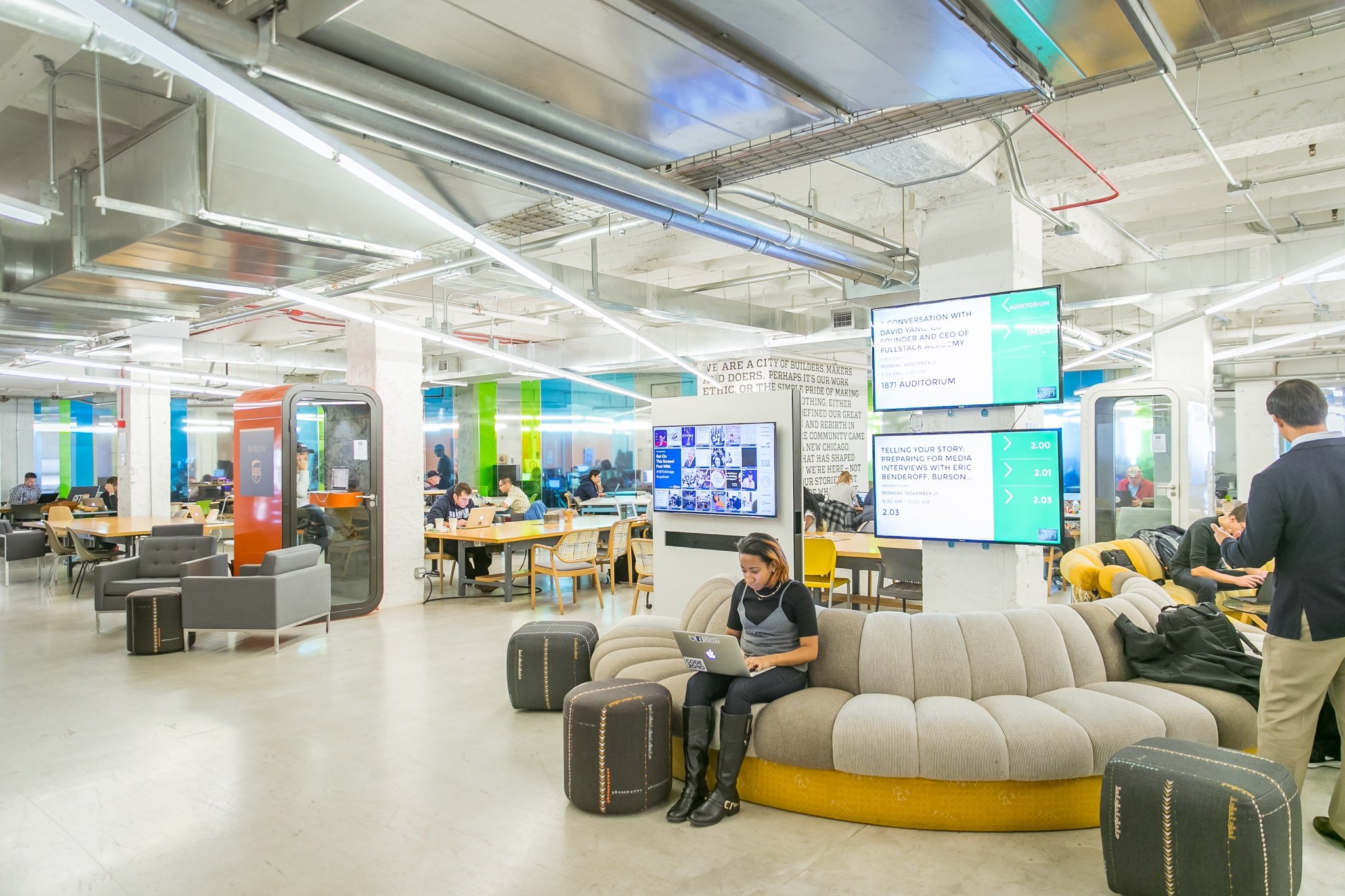In this guest post, Nicole Weldon, Regional Senior Vice President at Truss and a mentor at 1871, shares a number of tips on how you can pick the best space for your organization, mission, and vision. Join her on July 16 at 1871 for a lunch and learn to hear more about how you can compare coworking and office spaces like a pro.
-min.jpg?width=610&name=7%20(1%20of%201)-min.jpg)
Guest Author: Nicole Weldon, Regional Senior Vice President, Truss
Within the last couple years, coworking’s popularity has grown immensely across the country, so much so that “coworking is the new normal,” according to AllWork. Coworking is no longer one big room where all employees sit and work together.
AllWork also reports that coworking space will continue to grow and they predict the demand will increase by 6 percent until 2020. We’re seeing that demand happen on Truss’ marketplace - 50 percent of companies with less than 10 employees searching are considering coworking.
In Chicago, some coworking centers offer companies their own personalization to help build the company’s brand, culture and identity. This can be as simple as putting the company’s logo on the entrance right off the elevator. For larger companies, this might include creating an entire floor built out for their company. These special touches make a company feel like they aren’t actually in a coworking space - and give them more control for having company meetings or gatherings. Another popular coworking option are private suites with private, internal offices and huddle rooms. That offers customization, design and furniture in a way that’s never been done before in the CRE industry.
So, what do you need to consider when deciding between leasing office space and coworking?
- Your Finances: A landlord is going to look at your company’s financials. Being aware of what you can and can’t afford when signing a lease is important and will factor into what your landlord will consider for you. Additionally, many startups and tech companies like that coworking rarely requires a financial review.
- Your Team’s Headcount: If your lease is for two to five people, or you plan to stay in that range for the next year, it may be a lot harder to find a traditional office space in your company’s budget. There are costs to upkeep kitchen space, printer, supplies and more - most of which are included in coworking spaces. Those fixed costs can make coworking more attractive to entrepreneurs and small business owners.
- New Neighborhoods: Small business owners looking for space don’t have to think singularly about the Loop. There are a number of neighborhoods within Chicago that have a high demand for coworking, including the following:
Fulton Market: One area in Chicago that continues to have a high demand for office space, and particularly in coworking, is Fulton Market. The area, formerly known as the meat-packing district, has boomed over the years with more corporate headquarters, tech companies and creative agencies signing leases. Some companies in Chicago have also used a hybrid of coworking space - called “enterprise space,” which are much larger suites that can accommodate teams of 20+ people. Fulton Market is attractive to business owners but there’s not a lot of open space left right now. Entrepreneurs and small business owners are also looking at neighboring areas, such as the West Loop and River North. This is likely to again change in the next year because of other new providers, such as Bond Collective and Convene.
Wicker Park and Ravenswood: These two areas in Chicago have a growing and strong demand of business owners who prefer to have their offices there. Both areas are transportation friendly and allow commuters from other areas of the city or the Chicago suburbs to drive more easily to work compared to having to drive into more populated areas closer to downtown. At this time, there is very limited coworking inventory available in either location but we expect to see more options in the near future.
- An Expert Opinion: A savvy local broker will be able to help you with options and explain the differences, plus they’ll also be aware of other spaces available, such as subleasing space from another company. In Chicago, subleasing has changed immensely over the past few years and the inventory goes quickly. For small business owners, subleasing often means more upfront costs than coworking, but less than traditional office space. For example, the office space might be fully furnished, but not with the kind of interiors that mirror the company’s style or culture. Subleasing can come with some nuisances for entrepreneurs, and they may find traditional office space or coworking space is more convenient.
As the third largest city in the country, it’s inevitable that Chicago is going to keep seeing changes in the CRE landscape for both office space and coworking. It’s important for entrepreneurs and small business owners to know their options and work with a local broker to find the right space for them.
The opinions of our guest bloggers are their own and not those of 1871. Learn more about Truss by following this link.


